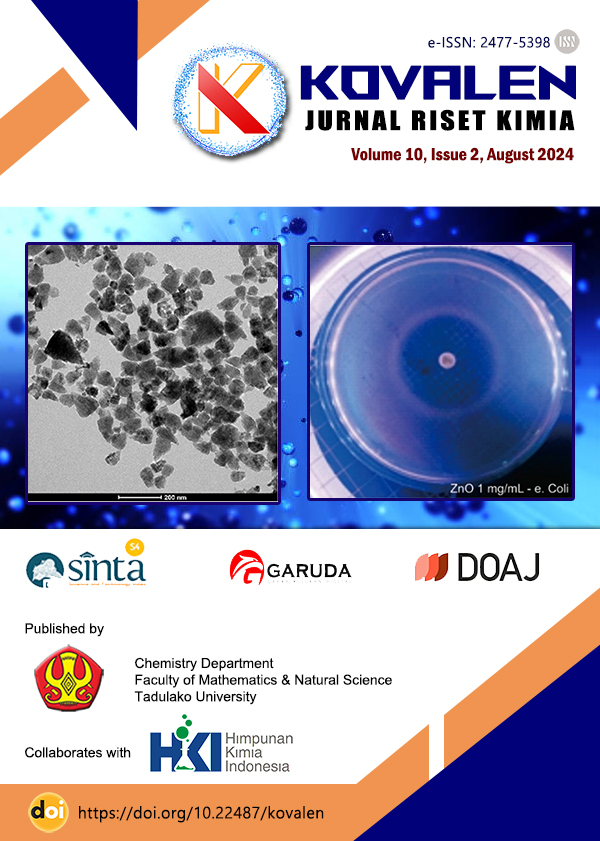Main Article Content
Abstract
The leachate produced at the Kawatuna landfill, managed without proper waste treatment systems, has been found to contain heavy metals like cadmium (Cd), which contaminate groundwater and pose significant health risks. This study investigates the reduction of Cd ions in leachate through adsorption using activated carbon (AC) waste. The AC waste was reactivated via thermal methods, including phosphoric acid immersion, heating, and washing. Morphological analysis was conducted using scanning electron microscopy (SEM), and adsorption efficacy was evaluated with atomic absorption spectroscopy (AAS). The findings indicate that AC waste with a pore diameter of 2.95 µm can be effectively reused as an adsorbent through thermal reactivation. Specifically, AC treated with H3PO4 immersion and heating exhibited a pore diameter of 3.24 µm, while heating and washing resulted in a pore diameter of 2.29 µm. The Cd concentration in leachate treated with AC immersed in H3PO4 followed by heating showed a modest reduction, whereas the heating and washing treatment led to a significant decrease in Cd levels, achieving an adsorption capacity of 3.92 mg/L within 50 min. This method presents a viable alternative for managing landfill leachate at the Kawatuna site.

